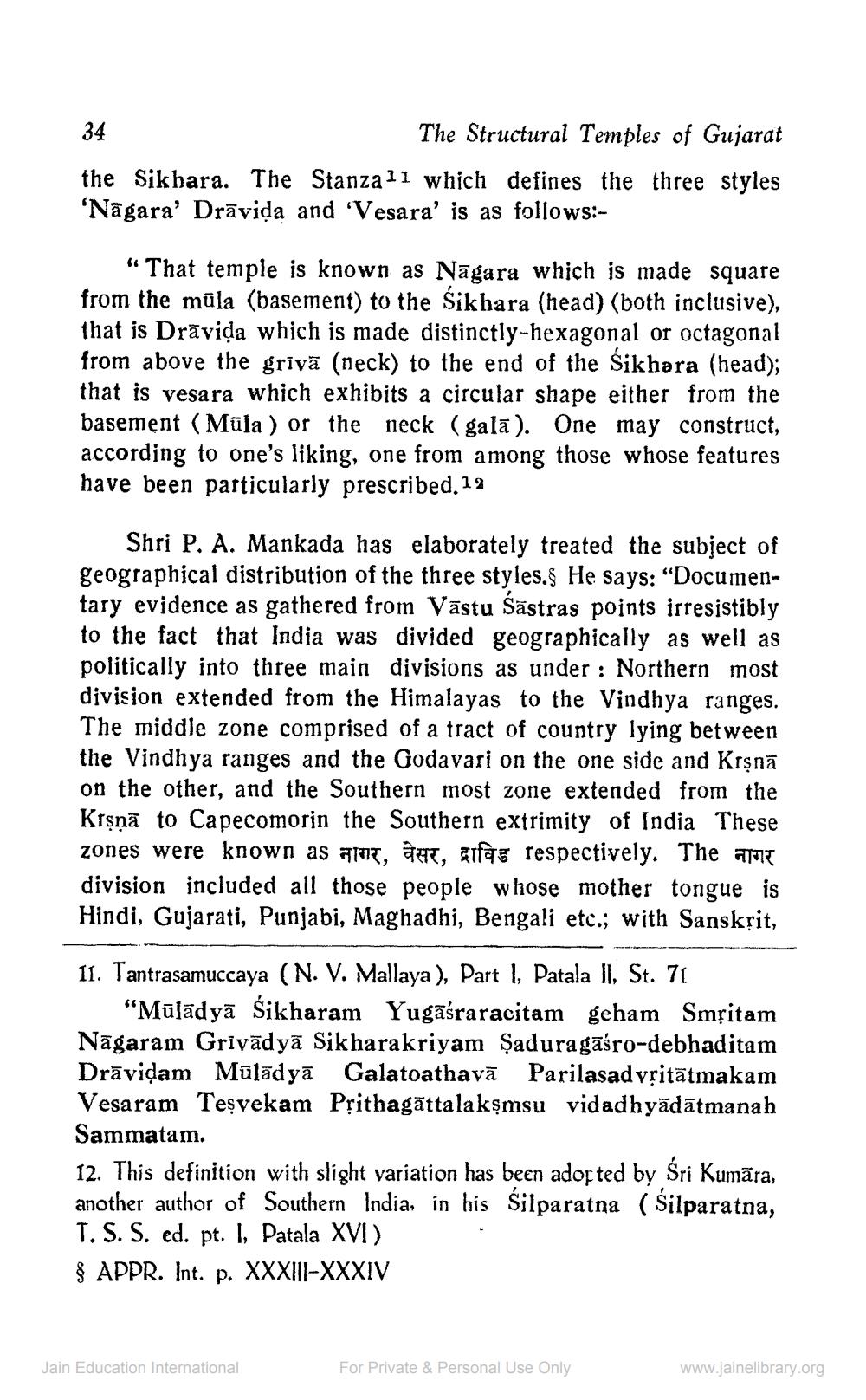________________
34
The Structural Temples of Gujarat the Sikhara. The Stanza 11 which defines the three styles 'Nagara' Draviḍa and 'Vesara' is as follows:
"That temple is known as Nagara which is made square from the mula (basement) to the Sikhara (head) (both inclusive), that is Draviḍa which is made distinctly-hexagonal or octagonal from above the grīvā (neck) to the end of the Sikhara (head); that is vesara which exhibits a circular shape either from the basement (Mula) or the neck (gala). One may construct, according to one's liking, one from among those whose features have been particularly prescribed. 12
Shri P. A. Mankada has elaborately treated the subject of geographical distribution of the three styles.§ He says: "Documentary evidence as gathered from Vastu Sastras points irresistibly to the fact that India was divided geographically as well as politically into three main divisions as under: Northern most division extended from the Himalayas to the Vindhya ranges. The middle zone comprised of a tract of country lying between the Vindhya ranges and the Godavari on the one side and Kṛṣṇā on the other, and the Southern most zone extended from the Krṣṇā to Capecomorin the Southern extrimity of India These zones were known as नागर, वेसर, द्राविड respectively. The नागर division included all those people whose mother tongue is Hindi, Gujarati, Punjabi, Maghadhi, Bengali etc.; with Sanskrit,
II. Tantrasamuccaya (N. V. Mallaya), Part I, Patala II, St. 71
"Mūlādya Sikharam Yugasraracitam geham Smṛitam Nagaram Grivādyā Sikharakriyam Şaduragaśro-debhaditam Drāviḍam Mūlādya Galatoathavā Parilasadvṛitätmakam Vesaram Teşvekam Prithagattalakṣmsu vidadhyādātmanah Sammatam.
12. This definition with slight variation has been adopted by Śri Kumāra, another author of Southern India, in his Silparatna (Śilparatna, T. S. S. ed. pt. 1, Patala XVI)
§ APPR. Int. p. XXXIII-XXXIV
Jain Education International
For Private & Personal Use Only
www.jainelibrary.org




